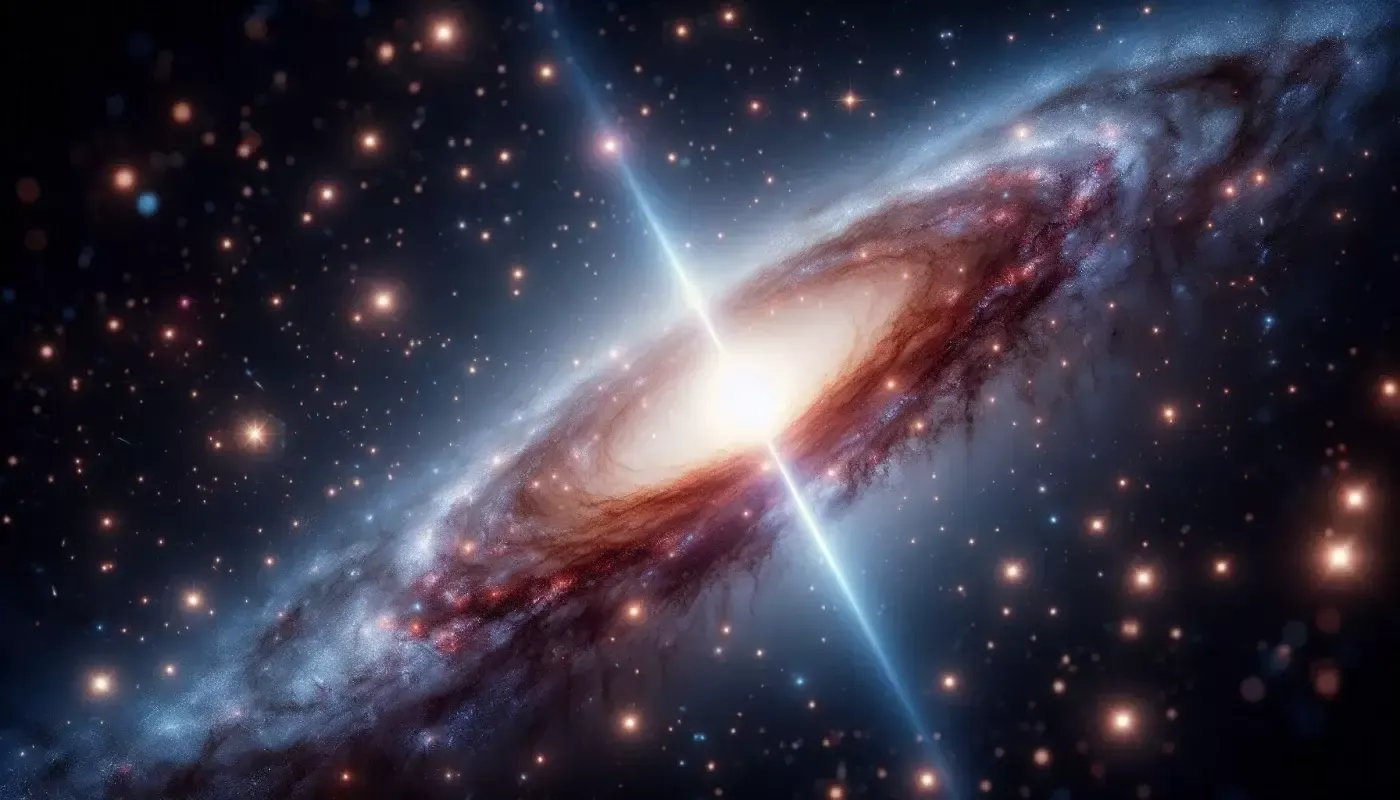
An international team of astronomers has identified a significant amount of oxygen ions in the JADES-GS-z14-0 galaxy, which is currently the oldest and farthest from us, using the ALMA microwave telescope. We are observing this galaxy as it was 290 million years after the Big Bang, reports the press service of the European Southern Observatory (ESO).
“This discovery shows that the ancient galaxy formed very quickly and evolved rapidly. It further confirms that the formation process of the universe's early galaxies began much earlier than we previously estimated,” says Sander Schouws, a researcher at the Leiden Observatory.
According to scientists, the JADES-GS-z14-0 galaxy was discovered in 2024 as part of the initial observation program of the JADES project by the "James Webb" orbital observatory. It is located in the Pechii constellation, 13.4 billion light-years away from Earth. Therefore, it can be observed almost immediately in its state from the early periods of the universe, after its thickness became transparent to electromagnetic waves.
This fact has prompted scientists to comprehensively study JADES-GS-z14-0 using the ALMA microwave telescope installed at the Chajnantor high-altitude observatory in the Chilean part of the Atacama Desert. This telescope has the ability to capture microwave radiation emitted by the coldest gas molecules. This allows it to be used to study the chemical composition of ancient galaxies and the chemical evolution of the universe.
Researchers say they initially expected to find relatively low amounts of astronomical "metals" - elements heavier than hydrogen and helium - in the JADES-GS-z14-0 galaxy. This was because its stars were not expected to produce large amounts of heavy nuclei. However, contrary to these expectations, ALMA data showed a very large amount of carbon and oxygen in this galaxy. Their proportion is approximately 5-20 times lower than the concentration in solar matter.
According to scientists, such measurement results obtained with ALMA turned out to be about ten times higher than the predictions of theorists. This indicates that the growth rates of the early galaxies in the universe and the speed of their chemical evolution have been seriously underestimated.
“Subsequent observations of JADES-GS-z14-0 and the search for other similarly ancient galaxies will help understand how oxygen and other 'metals' exactly formed in their environments and when these star clusters came into existence,” say the scientists.







